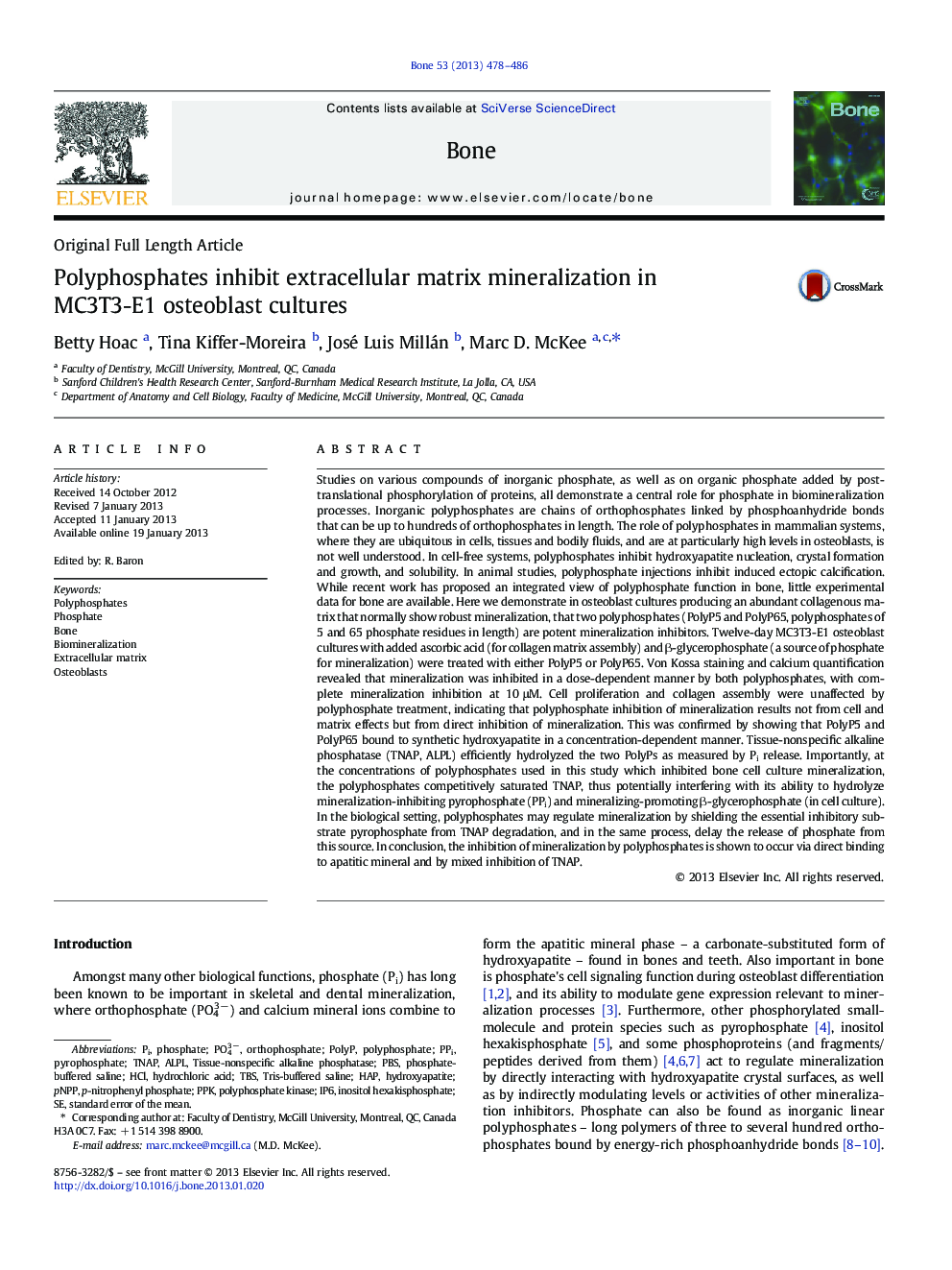| کد مقاله | کد نشریه | سال انتشار | مقاله انگلیسی | نسخه تمام متن |
|---|---|---|---|---|
| 5890642 | 1153258 | 2013 | 9 صفحه PDF | دانلود رایگان |

Studies on various compounds of inorganic phosphate, as well as on organic phosphate added by post-translational phosphorylation of proteins, all demonstrate a central role for phosphate in biomineralization processes. Inorganic polyphosphates are chains of orthophosphates linked by phosphoanhydride bonds that can be up to hundreds of orthophosphates in length. The role of polyphosphates in mammalian systems, where they are ubiquitous in cells, tissues and bodily fluids, and are at particularly high levels in osteoblasts, is not well understood. In cell-free systems, polyphosphates inhibit hydroxyapatite nucleation, crystal formation and growth, and solubility. In animal studies, polyphosphate injections inhibit induced ectopic calcification. While recent work has proposed an integrated view of polyphosphate function in bone, little experimental data for bone are available. Here we demonstrate in osteoblast cultures producing an abundant collagenous matrix that normally show robust mineralization, that two polyphosphates (PolyP5 and PolyP65, polyphosphates of 5 and 65 phosphate residues in length) are potent mineralization inhibitors. Twelve-day MC3T3-E1 osteoblast cultures with added ascorbic acid (for collagen matrix assembly) and β-glycerophosphate (a source of phosphate for mineralization) were treated with either PolyP5 or PolyP65. Von Kossa staining and calcium quantification revealed that mineralization was inhibited in a dose-dependent manner by both polyphosphates, with complete mineralization inhibition at 10 μM. Cell proliferation and collagen assembly were unaffected by polyphosphate treatment, indicating that polyphosphate inhibition of mineralization results not from cell and matrix effects but from direct inhibition of mineralization. This was confirmed by showing that PolyP5 and PolyP65 bound to synthetic hydroxyapatite in a concentration-dependent manner. Tissue-nonspecific alkaline phosphatase (TNAP, ALPL) efficiently hydrolyzed the two PolyPs as measured by Pi release. Importantly, at the concentrations of polyphosphates used in this study which inhibited bone cell culture mineralization, the polyphosphates competitively saturated TNAP, thus potentially interfering with its ability to hydrolyze mineralization-inhibiting pyrophosphate (PPi) and mineralizing-promoting β-glycerophosphate (in cell culture). In the biological setting, polyphosphates may regulate mineralization by shielding the essential inhibitory substrate pyrophosphate from TNAP degradation, and in the same process, delay the release of phosphate from this source. In conclusion, the inhibition of mineralization by polyphosphates is shown to occur via direct binding to apatitic mineral and by mixed inhibition of TNAP.
⺠Polyphosphates inhibit osteoblast culture mineralization by direct binding to hydroxyapatite. ⺠Inhibition of mineralization by polyphosphates is independent of cell proliferation or collagen assembly. ⺠TNAP efficiently hydrolyzes unbound polyphosphates under physiologic conditions. ⺠Polyphosphates may impair TNAP cleavage of pyrophosphate or β-glycerophosphate via a mixed inhibition mechanism.
Journal: Bone - Volume 53, Issue 2, April 2013, Pages 478-486